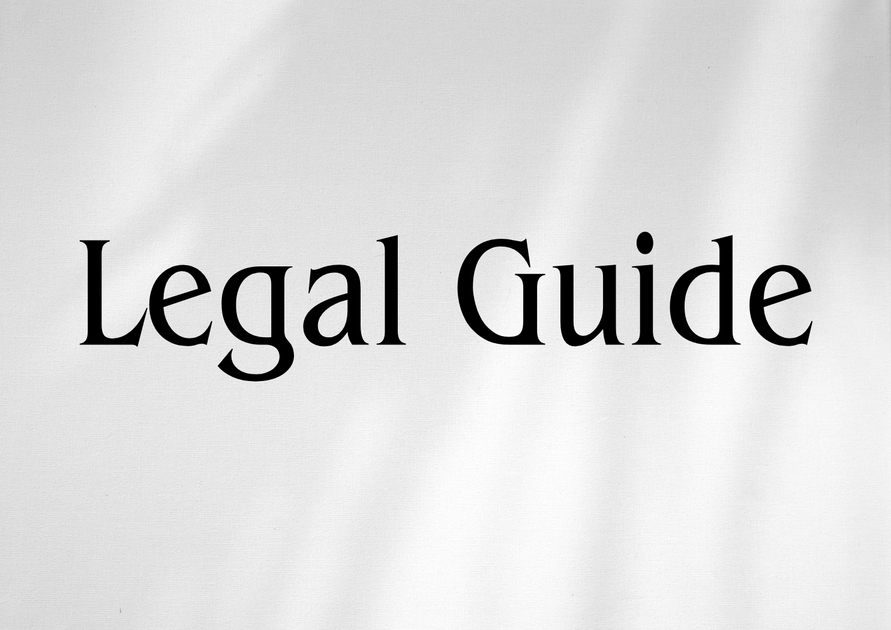Introduction: The Strategic Importance of Environmental and Noise Regulations at Saudi Airports for UAE Businesses
The aviation sector serves as an economic and logistical artery for both Saudi Arabia and the United Arab Emirates (UAE). As the region invests in rapid infrastructure growth and aims to position itself as a global transit hub, the legal and regulatory environment surrounding airport operations has evolved dramatically. Notably, environmental and noise regulations at Saudi airports have become increasingly stringent, reflecting national commitments to sustainable development, international aviation agreements, and heightened community expectations. For UAE-based entities—whether airlines, ground handling service providers, construction companies, or executive travelers—these changes are not only operationally significant but also carry substantial legal and compliance implications.
In light of updated directives from UAE authorities, such as the Federal Law No. 24 of 1999 for the Protection and Development of the Environment (as amended), and parallel developments in the Kingdom of Saudi Arabia (KSA), understanding the interplay of environmental law and cross-border compliance is critical. This expert analysis offers a comprehensive review of the legal landscape governing environmental and noise regulations at Saudi airports. It draws clear links to UAE law, provides actionable guidance for compliance, and equips decision-makers with essential insights to manage operational risk in a rapidly evolving sector.
This article is particularly relevant for businesses and legal practitioners with cross-border operations, compliance managers negotiating international contracts, and UAE corporate leaders seeking to future-proof their operations amid growing sustainability mandates and regulatory scrutiny.
Table of Contents
- Overview of Saudi Airport Environmental and Noise Regulations
- Legal Framework: Key Laws, Decrees, and Authorities
- In-Depth Analysis of Major Provisions
- Comparison Between UAE and Saudi Regulations (with Table)
- Practical Guidance for UAE Companies Operating at Saudi Airports
- Case Studies: Real-World Application and Compliance Scenarios
- Risks of Non-Compliance and Effective Compliance Strategies
- Future Outlook: Trends, Best Practices, and Forward Planning
- Conclusion: Strategic Takeaways and Recommendations
Overview of Saudi Airport Environmental and Noise Regulations
Saudi Arabia has significantly enhanced its regulatory regime for environmental protection and noise abatement at airports over the past decade. These reform initiatives align with the Kingdom’s Vision 2030, a national strategy emphasizing sustainability, economic diversification, and international investment attractiveness.
The General Authority of Civil Aviation (GACA)—the KSA’s principal aviation regulator—oversees a complex network of policies encompassing air quality, noise emissions, waste management, and energy efficiency. Recent regulations are designed to not merely achieve regulatory compliance but also to enhance Saudi airports’ competitiveness and global reputation.
For UAE businesses and legal entities operating regionally, understanding these regulations has become an essential due diligence requirement. Non-compliance can result in substantial fines, operational delays, reputational damage, and adverse contractual consequences. Moreover, compliance frameworks often serve as benchmarks for bilateral agreements and intergovernmental collaborations in the GCC.
Legal Framework: Key Laws, Decrees, and Authorities
Saudi Laws and Regulatory Bodies
The legal architecture governing environmental and noise management at Saudi airports is defined by a combination of royal decrees, ministerial resolutions, and technical guidelines. Key elements include:
- General Authority of Civil Aviation (GACA) Environmental Regulations: GACA’s Regulations for the Protection of the Environment at Saudi Airports detail specific requirements for air and noise quality, waste management, and compliance documentation.
- Royal Decree No. M/34 (2001) – Environment Law: This sets the broad legislative parameters for all environmental matters in the Kingdom, including those applicable to aviation infrastructure.
- Executive Regulations on Environmental Protection (2021): These regulations expand upon the obligations introduced by the Royal Decree and establish detailed enforcement mechanisms, reporting mandates, and sanctions.
- Noise Abatement Programmes: Technical Circulars issued by GACA require airports within KSA to monitor, report, and systematically reduce noise from aircraft and airport-related sources, closely following International Civil Aviation Organization (ICAO) guidance (Annex 16).
- Coordination with Saudi Ministry of Environment, Water, and Agriculture: For environmental impact assessments and compliance with national sustainability objectives.
Relevant UAE Laws and Their Cross-Border Impact
UAE-based stakeholders should also consider relevant domestic legislation, such as:
- Federal Law No. 24 of 1999 for the Protection and Development of the Environment and its Amendments (2020): Sets stringent standards for noise and pollution applicable to Emirati entities, including extraterritorial projects.
- UAE Federal Decree No. 38 of 2022 (Amendments to Environmental Law): Introduces heightened penalties and extends certain obligations to international operations.
- UAE Ministry of Climate Change and Environment (MOCCAE) Technical Guidance: Provides rules for Environmental Impact Assessment (EIA) and broadens the scope of legal compliance to cross-border partnerships.
The intersection of UAE and Saudi law is further complicated by bilateral agreements and GCC-wide aviation and environmental initiatives. UAE businesses must be mindful that Saudi regulatory agencies require compliance, regardless of the nationality of the service provider or investor.
In-Depth Analysis of Major Provisions
Noise Management Requirements
- Quantitative Noise Limits: GACA imposes airport-specific maximum permissible noise levels, typically measured in decibels (dB) at various perimeter points, daytime and nighttime. Ambient monitoring is required year-round.
- Mandatory Noise Mapping and Action Plans: Each airport must produce detailed noise maps and submit action plans for mitigation. These are reviewed and approved by GACA annually.
- Technology Upgrades: Operators are compelled to utilize low-noise ground support equipment, and airlines may be barred from using aircraft not compliant with ICAO Chapter 4 noise standards.
- Curfews and Operational Limitations: Certain Saudi airports enforce night-time curfews or restrict high-noise aircraft operations during sensitive hours to protect local communities.
Environmental Protection Provisions
- Air Quality Monitoring and Controls: Continuous emission monitoring for pollutants such as NOx, CO, particulate matter, and volatile organic compounds is required. Exceedances must trigger immediate remediation.
- Waste Management Protocols: Comprehensive waste segregation, recycling, and hazardous materials procedures are mandatory. Airports must file quarterly reports outlining their efforts.
- Water Quality Safeguards: Discharge from maintenance and de-icing operations is regulated under robust water quality standards.
- Environmental Impact Assessments (EIA): Significant expansion or modification of airport facilities requires a GACA-approved EIA, in coordination with other ministries.
Enforcement and Sanctions
- Administrative Penalties: GACA imposes significant fines for breaches, often proportionate to the environmental harm and operator’s prior compliance record. Fines for major violations can exceed SAR 500,000.
- Suspension of Activities: Persistent or serious breaches can result in partial or full suspension of ground operations, affecting commercial contracts and traffic rights.
- Obligation to Remediate: Airports and service providers must implement corrective action at their own cost, subject to GACA verification.
- Reporting and Record-Keeping: Comprehensive documentation is required for all environmental and noise management activities for audit purposes.
Comparison Between UAE and Saudi Regulations
| Aspect | UAE Law | Saudi Regulation |
|---|---|---|
| Regulatory Authority | MOCCAE; General Civil Aviation Authority (GCAA) | GACA; Ministry of Environment |
| Noise Limits (Airport Perimeter) | Variable (typically 55 dB day, 45 dB night) | Variable (typically 60 dB day, 50 dB night) |
| Environmental Impact Assessment (EIA) | Mandatory for new/expanded facilities under Fed. Law 24/1999; EIA approval by MOCCAE | Mandatory under Royal Decree M/34, via GACA, coordinated with Ministry of Environment |
| Noise Mapping | Required at all international airports | Required at all main airports under GACA guidelines |
| Ground Support Equipment | Progressive phase-out of high-emission/noise vehicles under 2025 update | Mandatory deployment of low-noise, low-emission vehicles by 2024 |
| Curfews | Imposed at select airports based on community input | Imposed at high-density airports; stricter enforcement against violators |
| Penalties | Up to AED 1 million for major breaches (Fed. Decree 38/2022) | Up to SAR 500,000+ per violation (GACA Environmental Regulations) |
| Record-Keeping | Required for 5 years minimum | Required for 5 years minimum |
Practical Guidance for UAE Companies Operating at Saudi Airports
UAE-based entities—especially airline operators, project managers, and HR teams—must adopt robust compliance programs to navigate the unique regulatory environment present at Saudi airports. Key recommendations include:
- Integrate Cross-Border Environmental Due Diligence: Extend your standard EHS protocols to cover KSA GACA requirements. Prior to entering any airport services contract, review updated GACA Circulars and confirm local compliance obligations with legal counsel.
- Establish Local Compliance Representation: Nominate an in-country representative or engage a registered legal consultancy with a Saudi presence to manage communications with GACA and facilitate site inspections.
- Contractual Safeguards: Ensure all subcontracts and local JV agreements feature explicit clauses regarding adherence to Saudi environmental and noise regulation, with clearly defined consequences for breaches, indemnity provisions, and insurance cover.
- Implement Training Programs: Roll out ongoing employee training programs, in both Arabic and English, on the specific requirements of GACA and the Ministry of Environment—including reporting timelines, permitted activities, and emergency response protocols.
- Leverage Technology: Utilize digital compliance platforms that integrate monitoring, reporting, and document management across multi-jurisdictional operations. These platforms can be synchronized with UAE compliance systems for consistency and audit-readiness.
Suggested Visual: Compliance Checklist Table
A tabular checklist for UAE businesses operating at Saudi airports, itemizing the primary compliance obligations (noise monitoring, noise mapping, EIA reports, waste management submission, etc.), recommended frequency, and responsible party.
Case Studies: Real-World Application and Compliance Scenarios
Case Study 1: Airline Noise Violation and Corrective Action
Scenario: A major UAE-based airline was notified in Q1 2024 of exceeding nighttime noise thresholds at King Khalid International Airport, Riyadh.
- Regulatory Response: GACA requested submission of detailed flight movement logs and noise monitoring data. An immediate fine of SAR 200,000 was imposed.
- Remediation: The airline implemented route adjustments and upgraded its ground support equipment, ensuring compliance within three months. GACA reduced subsequent penalties in recognition of proactive remediation, but withheld clearance for a new route pending a satisfactory 12-month compliance record.
- Lesson: Prompt remedial action and transparent communications are essential for maintaining regulatory goodwill and safeguarding operational licenses.
Case Study 2: Airport Expansion EIA Challenges
Scenario: A UAE-headquartered engineering firm led the expansion of a cargo terminal in Jeddah in 2023. The EIA revealed risk of chemical runoff into local water sources.
- Regulatory Response: GACA and the Ministry of Environment delayed commissioning, pending additional water management safeguards. A revised EIA and enhanced containment solutions were required.
- Result: The project resumed six months later, following installation of advanced filtration systems and a public consultation with affected communities.
- Lesson: Early, comprehensive EIA preparation—including engagement of Saudi-registered environmental experts—can forestall costly project delays.
Hypothetical: Ground Handling Firm Waste Management Breach
Scenario: A UAE-based ground handling firm inadvertently commingles hazardous airfield waste with general waste at a major Saudi airport.
- Risk: Under recently amended Executive Regulations, GACA can revoke the firm’s airport operating license and impose sizable fines for environmental damage.
- Best Practice: Regular internal audits, bilingual signage, and joint compliance drills with Saudi partners are strongly advised.
Risks of Non-Compliance and Effective Compliance Strategies
Risks of Non-Compliance
- Financial Liability: Severe fines, forfeiture of existing contracts, and exposure to third-party damage claims.
- Operational Disruption: Suspension or cancellation of operating permits and routes.
- Reputational Harm: Legal proceedings, public reporting in Saudi media, and heightened scrutiny of future projects.
- Criminal Liability: For gross misconduct, individual executives may be held personally liable, especially in the case of environmental harm with willful negligence.
Effective Compliance Strategies
- Conduct Legal Gap Analysis: Commission periodic reviews to identify mismatches between UAE-controlled procedures and Saudi regulatory requirements.
- Engage in Early Regulator Liaison: Proactive engagement with GACA can clarify ambiguities, secure pre-approvals, and ensure prompt issue resolution.
- Integrate Regulatory Updates: Maintain an up-to-date compliance manual, reflecting both Saudi legal developments and transnational best practices (ICAO, UAE GCAA, IATA standards).
- Monitor Legislative Amendments: Regularly track changes on the GACA portal and subscribe to legal bulletins from qualified Saudi and UAE legal counsel.
Suggested Visual: Risk-Impact matrix
A matrix displaying typical breaches (e.g. noise threshold breach, improper waste disposal, incomplete EIA report) against operational, financial, and reputational risk scores.
Future Outlook: Trends, Best Practices, and Forward Planning
Key Trends for 2025 and Beyond
- Digitalization of Compliance: Adoption of AI-driven environmental monitoring and reporting systems at major Saudi airports, improving enforcement and enabling real-time data exchange with UAE partners.
- Heightened Cross-Border Obligations: Saudi and UAE authorities are moving toward harmonization of environmental standards, creating a shared compliance framework for the aviation industry and enforcing stricter penalties for violations by foreign operators.
- Expansion of ESG Reporting: Stakeholders, including UAE-listed entities, must ensure ESG (Environmental, Social, Governance) disclosures extend to operations at Saudi airports under the new UAE Securities and Commodities Authority (SCA) requirements.
Best Practices Going Forward
- Centralize compliance management functions for all GCC airport operations.
- Participate in GACA-accredited training and information sessions on emerging regulatory requirements.
- Embed compliance checkpoints into project management workflows—especially at tender stage, contract signing, and project close-out.
- Maintain transparent, bilingual (Arabic and English) communication channels for all regulatory correspondence and compliance documentation.
Conclusion: Strategic Takeaways and Recommendations
The legal landscape for environmental and noise regulation at Saudi airports continues to evolve, in tandem with Saudi Vision 2030 and the UAE’s environmental leadership agenda. As stakeholder expectations and governmental oversight intensify, the costs of non-compliance have grown—not only from a legal or financial perspective, but from operational and reputational standpoints as well.
For UAE-based companies, preparedness means more than technical compliance; it requires an integrated, forward-thinking strategy fortified by rigorous legal review, continuous staff training, and smart investment in technology and local alliances. By fostering in-depth familiarity with both Saudi and UAE regulations—and adopting global best practices—organizations can turn compliance into a strategic advantage, enabling safer, more reliable, and more sustainable airport operations throughout the GCC.
Professional Advisory: To ensure your business is fully aligned with the latest cross-border environmental and noise requirements, consult with a legal specialist experienced in GCC aviation law, and consider engaging multidisciplinary teams for complex EIA projects or operational expansions.



